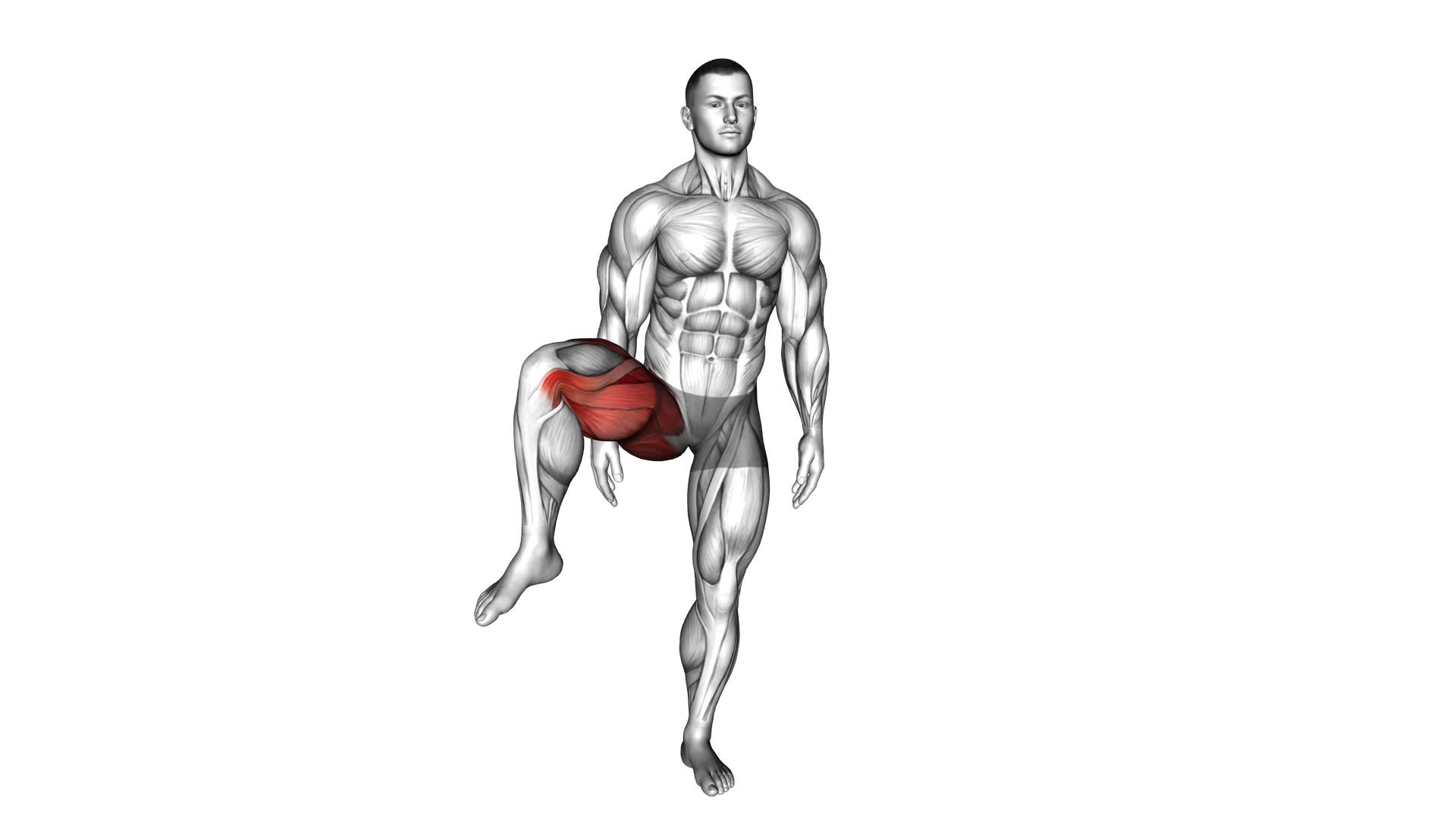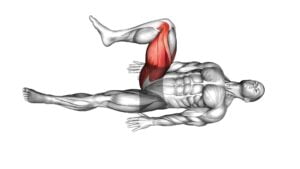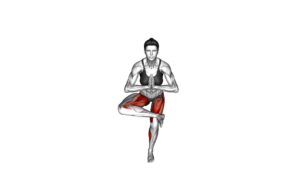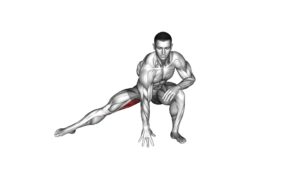Standing Bent Knee Figure 8 – Video Exercise Guide & Tips

Looking to strengthen your core and improve your balance? Check out the Standing Bent Knee Figure 8 exercise!
Watch This Exercise Video
In this video exercise guide, we'll show you step-by-step instructions for proper form, common mistakes to avoid, and modifications for all fitness levels.
With our helpful tips, you'll be able to maximize your results and achieve your fitness goals.
Get ready to feel the burn!
Key Takeaways
- The Standing Bent Knee Figure 8 exercise improves balance and targets core muscles.
- It enhances stability, coordination, and reduces the risk of falls and injuries.
- This exercise also improves posture and overall core strength.
- Modifications and variations can be made to accommodate different fitness levels and goals.
Benefits of the Standing Bent Knee Figure 8
Discover the numerous benefits you can experience from performing the Standing Bent Knee Figure 8 exercise. This exercise is highly effective for improving balance and targeting core muscles. By incorporating the Standing Bent Knee Figure 8 into your fitness routine, you can significantly enhance your overall stability and strengthen your core.
One of the main benefits of this exercise is its ability to improve balance. The Standing Bent Knee Figure 8 requires you to shift your weight from one leg to the other while performing a figure 8 motion with your arms. This challenges your body's stability and forces your core muscles to engage in order to maintain proper balance. Over time, this exercise can help you develop greater stability and coordination, reducing your risk of falls and injuries.
Additionally, the Standing Bent Knee Figure 8 is a fantastic way to target your core muscles. As you perform the figure 8 motion, your abdominal muscles, obliques, and lower back muscles are activated. These muscles work together to stabilize your spine and maintain proper posture throughout the exercise. Regularly incorporating this exercise into your routine can help strengthen and tone your core, resulting in improved posture and overall core strength.
Equipment Needed for the Exercise
To perform the Standing Bent Knee Figure 8 exercise, you'll need a stability ball. This piece of equipment is essential for maintaining balance and stability throughout the exercise. The stability ball should be the correct size for your height. When standing on the stability ball, make sure your feet are positioned hip-width apart for optimal stability.
In addition to the stability ball, there are a few modifications and variations you can consider for this exercise. If you don't have access to a stability ball, you can use a foam roller or a rolled-up towel instead. This will provide a similar unstable surface for your feet.
For those looking to increase the difficulty of the exercise, you can try performing it with your eyes closed. This will challenge your balance and proprioception even further. Another variation is to hold a light dumbbell or kettlebell in your hands while performing the figure 8 motion. This will add resistance and engage your upper body muscles as well.
Remember to always listen to your body and choose modifications or variations that suit your fitness level and goals. It's important to use proper form and technique to prevent injury and get the most out of the exercise.
Step-By-Step Instructions for Proper Form
To perform the Standing Bent Knee Figure 8 exercise with proper form, ensure that your feet are hip-width apart on the stability ball. This exercise targets your core muscles, improves balance, and enhances coordination. Follow these step-by-step instructions for proper execution:
- Stand tall with your feet hip-width apart on the stability ball.
- Keep your core engaged and maintain a neutral spine throughout the exercise.
- Place your hands on your hips or extend them out in front of you for balance.
- Bend your knees slightly and lift one foot off the stability ball.
- Keep your standing leg slightly bent to maintain stability.
- Avoid leaning forward or backward, and focus on keeping your weight centered.
- Slowly move your lifted leg in a figure 8 pattern.
- Start by crossing your leg in front of your body, then behind your body, creating the figure 8 shape.
- Maintain control and stability as you move through the pattern.
Common mistakes to avoid:
- Leaning to one side or losing balance.
- Allowing your lower back to arch or shoulders to hunch.
- Rushing the movement and sacrificing proper form.
Tips for proper execution:
- Focus on engaging your core muscles throughout the exercise.
- Keep your movements controlled and deliberate.
- Start with small figure 8 patterns and gradually increase the size as you gain strength and stability.
Common Mistakes to Avoid
Avoid leaning to one side or losing balance while performing the Standing Bent Knee Figure 8 exercise. Maintaining proper technique is crucial to maximize the benefits and prevent injuries.
One common mistake is shifting your weight excessively to one side during the exercise. This can happen when you don't engage your core muscles properly, causing your body to tilt and lose balance. To avoid this, focus on keeping your torso upright and your hips level throughout the movement.
Another mistake to watch out for is swinging your legs too forcefully. This can lead to a loss of control and compromise the effectiveness of the exercise. Instead, aim for controlled and deliberate movements, focusing on engaging the muscles in your legs and core.
Lastly, avoid rushing through the exercise. Performing the Standing Bent Knee Figure 8 too quickly can reduce its effectiveness and increase the risk of injury. Take your time and focus on executing each repetition with precision and control.
Modifications and Variations for All Fitness Levels
If you want to modify or add variations to the Standing Bent Knee Figure 8 exercise, you can tailor it to suit your fitness level. Here are some exercise modifications and fitness level adaptations that you can try:
- Decrease the range of motion: If you're just starting out or have limited mobility, you can reduce the range of motion by bending your knees less or making smaller figure 8 movements. This will make the exercise less challenging and more accessible for beginners.
- Increase the intensity: If you're looking for a more advanced version of the exercise, you can increase the intensity by adding resistance. You can do this by holding a dumbbell or kettlebell in your hands while performing the figure 8 movements. This will engage your muscles more and make the exercise more challenging.
By modifying the range of motion or adding resistance, you can customize the Standing Bent Knee Figure 8 exercise to match your fitness level and goals. Remember to always listen to your body and choose the modifications that feel comfortable and safe for you.
Now that you know how to modify the exercise, let's move on to the next section where we'll discuss some tips for maximizing your results.
Tips for Maximizing Your Results
To maximize your results, incorporate these key strategies into your Standing Bent Knee Figure 8 exercise routine.
First and foremost, focus on maximizing your effort during each repetition. This means engaging your core, maintaining proper form, and really pushing yourself to work those muscles. By giving it your all, you'll ensure that you're getting the most out of each and every movement.
Another tip for increasing the effectiveness of the Standing Bent Knee Figure 8 exercise is to gradually increase the intensity. Start with lighter weights or no weights at all, and as you become more comfortable and proficient, gradually add more resistance. This will challenge your muscles and allow for continuous progress and improvement.
In addition, make sure to pay attention to your breathing. Proper breathing technique not only helps you maintain focus and control during the exercise, but it also ensures that oxygen is flowing to your muscles, maximizing their performance.
Lastly, don't forget to listen to your body. If you feel any pain or discomfort, make modifications or adjustments as needed. Pushing yourself is important, but it's equally important to prioritize your safety and well-being.
Frequently Asked Questions
Is the Standing Bent Knee Figure 8 Suitable for Beginners?
Yes, the standing bent knee figure 8 is suitable for beginners. It's a versatile exercise that can be modified to accommodate different fitness levels. By starting with smaller range of motion and gradually increasing intensity, beginners can safely perform this exercise.
The standing bent knee figure 8 variations provide a challenging workout for the core, hips, and glutes. It improves overall fitness by enhancing balance, coordination, and strength in the lower body.
Can the Standing Bent Knee Figure 8 Help With Weight Loss?
The standing bent knee figure 8 exercise is a great addition to your routine if you're looking to lose weight. By incorporating this exercise into your workout, you can burn calories and increase your overall fitness.
The standing bent knee figure 8 can be modified to suit your fitness level, making it suitable for beginners as well.
The benefits of this exercise extend beyond weight loss, as it also helps improve balance, coordination, and core strength.
How Many Calories Can Be Burned by Doing the Standing Bent Knee Figure 8?
To determine the number of calories burned by doing the standing bent knee figure 8, you need to consider several factors. Factors such as your weight, intensity, and duration of the exercise play a role in calorie burn.
The standing bent knee figure 8 is a dynamic exercise that engages multiple muscle groups, which can contribute to a higher calorie burn. However, to maximize calorie burn and achieve proper form, it's essential to perform the exercise correctly.
Can the Standing Bent Knee Figure 8 Be Done With a Resistance Band?
Yes, you can modify the standing bent knee figure 8 exercise by incorporating a resistance band. This modification adds an extra challenge to your workout by increasing the resistance on your muscles.
However, if you don't have access to a resistance band, there are alternative exercises you can try to target similar muscle groups.
These modifications and alternatives can help you switch up your routine and keep your workouts effective and engaging.
Are There Any Specific Muscles Targeted by the Standing Bent Knee Figure 8?
The standing bent knee figure 8 exercise targets specific muscles in your body. It engages your core muscles, including your abdominal muscles and obliques, as you move your legs in a figure 8 motion.
This exercise also activates your hip flexors, glutes, and quadriceps, providing a great workout for your lower body.
If you're a beginner, you can modify this exercise by using lighter weights or focusing on slower, controlled movements to build strength and stability.
Conclusion
In conclusion, the standing bent knee figure 8 is a highly effective exercise for improving core strength and stability.
It requires minimal equipment and can be easily modified to suit different fitness levels.
By following proper form and avoiding common mistakes, you can maximize your results and achieve your fitness goals.
Remember to consult with a professional trainer or instructor to ensure correct technique and to prevent any potential injuries.
Keep challenging yourself and enjoy the benefits of this versatile exercise.

Author
Years ago, the spark of my life’s passion ignited in my mind the moment I stepped into the local gym for the first time. The inaugural bead of perspiration, the initial endeavor, the very first surge of endorphins, and a sense of pride that washed over me post-workout marked the beginning of my deep-seated interest in strength sports, fitness, and sports nutrition. This very curiosity blossomed rapidly into a profound fascination, propelling me to earn a Master’s degree in Physical Education from the Academy of Physical Education in Krakow, followed by a Sports Manager diploma from the Jagiellonian University. My journey of growth led me to gain more specialized qualifications, such as being a certified personal trainer with a focus on sports dietetics, a lifeguard, and an instructor for wellness and corrective gymnastics. Theoretical knowledge paired seamlessly with practical experience, reinforcing my belief that the transformation of individuals under my guidance was also a reflection of my personal growth. This belief holds true even today. Each day, I strive to push the boundaries and explore new realms. These realms gently elevate me to greater heights. The unique combination of passion for my field and the continuous quest for growth fuels my drive to break new ground.







